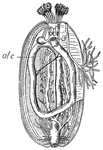Clipart tagged: ‘sea cucumber’
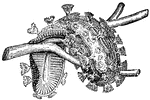
Cristatella Mucedo (Cuvier)
"The whole internal cavity in these animals is occupied by little, white tubes. The mouth opens at the…
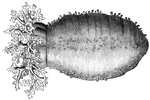
Sea Cucumber
A sea cucumber may be compared t a sea urchin that has been drawn out in the direction of the pole -…
Holothuria Tubule
An illustration of a sea cucumber. The sea cucumber (also known as trepang, bêche-de-mer, balate,…
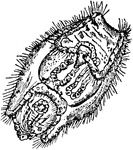
Holothuria Tubulosa (Larva)
An illustration of the larval form of the Holothuria tubulosa, sea cucumber.

Man Holding Sea Cucumber
An illustration of a man holding a sea cucumber. The sea cucumber (also known as trepang and sea slug)…

Oneirophanta Mutabilis
An illustration of a Oneirophanta Mutabilis, a type of sea cucubmer. The sea cucumber (also known as…
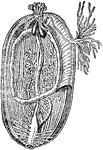
Sea Cucumber
An interior view of a sea cucumber. The sea cucumber (also known as trepang, bêche-de-mer, balate,…


